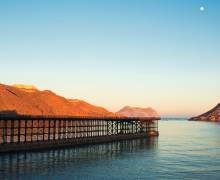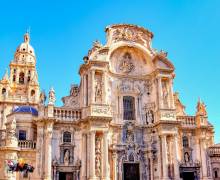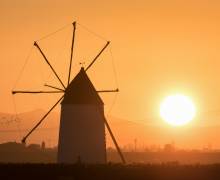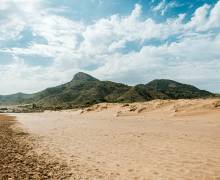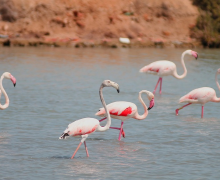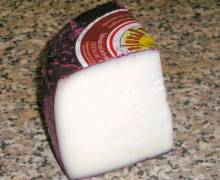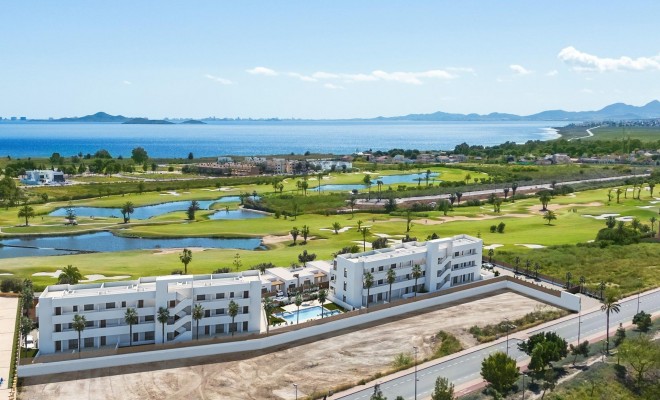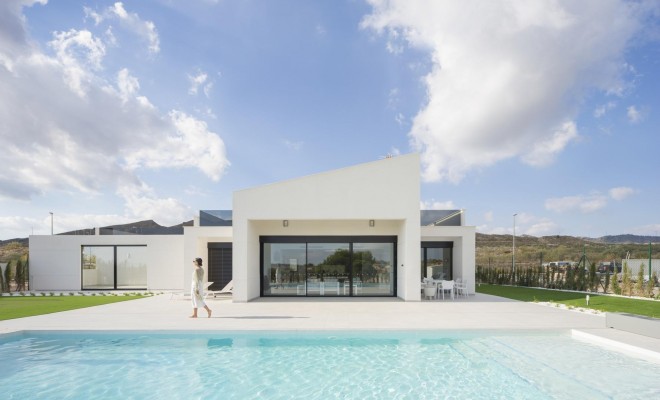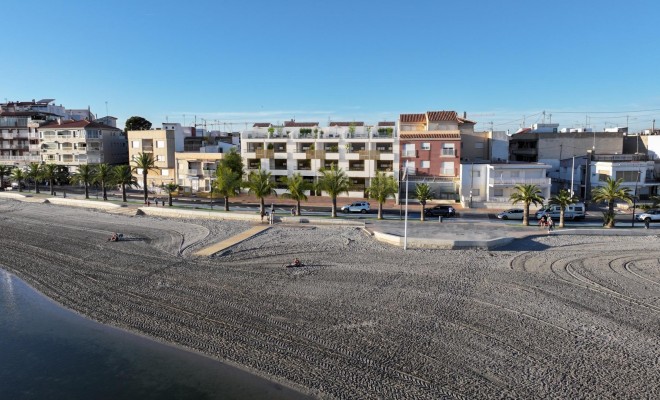The ultimate guide to the Costa Cálida, the 'warm coast' of Murcia

Aah, the Costa Calida! Located in the Spanish region of Murcia, this 'warm coast' stretches over 250 kilometers along the Mediterranean Sea: a long stretch of golden sandy beaches, which often fly a blue flag, picturesque bays and crystal clear water. Add to that the wonderfully pleasant climate - with more than 300 sunny days a year - and you realize that this is a paradise on earth for beach bunnies and nature lovers. Get to know the Costa Cálida.
Location of the Costa Calida
The Costa Cálida is the coastline of the Spanish province of Murcia - from El Mojón in the north, near the border with the province of Alicante, to Águilas in the south, near Almería. The Mar Menor forms the northern border, a saltwater lagoon separated from the Mediterranean Sea by a long spit of land. That headland, La Manga, is touristy, but other parts of the Costa Cálida are much less developed and therefore not overrun. There you will find wild beaches, narrow coves, saltwater lakes and sleepy villages where stress is not an option.
Climate of the Costa Cálida
The Costa Cálida has a mild Mediterranean climate, characterized by pleasant temperatures and plenty of sunshine. The sun in particular is extremely generous - an average of 315 sunny days per year, good for 3000 hours of sunshine per year. The average annual temperature is about 18 degrees Celsius. In addition, the region generally has little precipitation, an average of only 34 centimeters per year. As a result, riverbeds often remain dry and some parts of the Costa Cálida are semi-desert.
Winter is pleasant, with minimum temperatures between 12 and 14 degrees Celsius and maximums of 20 to 22 degrees. However, the nights can cool down from late November to early March, especially inland. Nevertheless, winter is perfect for walking, cycling and other outdoor activities.
In summer, temperatures rise famously, with minimum temperatures ranging from 18 to 20 degrees Celsius and maximum temperatures varying between 30 and 35 degrees. It is sultry both during the day and at night. Inland temperatures regularly reach 40 degrees or more, but on the coast a refreshing wind brings coolness. In the capital Murcia it is easily five degrees warmer than on the coast.
Take a map and study the location of the Costa Cálida. Due to its location, protected by the mainland, the cold water of the Atlantic Ocean does not reach these coasts. This makes the Costa Cálida the warmest in Spain. You can swim until November - and you don't have to be a polar bear for that.
In September and October, short but intense rain showers sometimes cool things down. This phenomenon, in which warm and cold air masses come together, is called 'gota fria'.
Brief history of the Costa Cálida
The history of the Costa Cálida goes back to ancient times. The first traces of human presence - found in Sima de las Palomos - date from the Neolithic period and are considered the second oldest on the Siberian Peninsula. During the Phoenician and Roman periods, these coasts became an important center of trade and economic activity. The Romans built Cartago Nova - modern Cartagena - which grew into a thriving port city.
After the fall of the Roman Empire, the Visigoths came first, later the Moors. The latter in particular left a lasting influence on the architecture, agriculture and culture of the region. During the Reconquista, in the 13th century, the Christian kingdoms reconquered the area from the Moors. Later, Charles III of Spain expanded Cartagena into an important naval base and fortified port - that legacy can still be admired. Nowadays the Costa Cálida is mainly known by tourists and as the vegetable garden of Europe.
Sights
La Manga del Mar Menor
La Manga del Mar Menor is an oddity on the map, a unique strip of land 22 kilometers long that separates the Mediterranean Sea from the Mar Menor, or 'smaller sea'. As in: smaller than the Mediterranean. Because in turn, the Mar Menor is the largest saltwater lagoon in Europe: 170 square kilometers, surrounded by sandy beaches and rich flora and fauna. Thanks to the high salt content and the presence of mud baths - beneficial for the skin and joints - the lagoon is known for its therapeutic effect. The secluded environment and calm water also make the Mar Menor an ideal beginner's spot for water sports such as windsurfing, sailing, kayaking and jet skiing.
Cartagena
This ancient port city welcomes visitors with a rich history dating back more than 2,000 years. Cartagena is bursting with cultural treasures and architectural splendor. Such as the Roman Theater, which was only discovered in 1988 during work under the ruins of an old cathedral. The center of Cartagena is largely car-free, making explorations on foot beckon. Three historic walking routes lead through narrow alleys.
Tired of the historic architecture? Visit the Navy Museum , the Museum of Underwater Archeology or Parque Rafael de la Cerda , a water park where the whole family will have fun. In the marina you can watch local fishermen bring in their daily catch and enjoy the freshest seafood.
Murcia
The capital of the region of the same name has almost half a million inhabitants, but still feels wonderfully relaxed. Thanks to the calm nature of the local population, who never allow themselves to be rushed. The city's eye-catcher is the cathedral with its imposing Baroque facade and beautiful interior. Don't miss the opportunity to sample the cuisine in one of the many tapas bars that are scattered like crumbs along the narrow alleys. Flower markets take place on the Plaza de las Flores, surrounded by Art Nouveau style houses. You can relax in the shade of one of the large ficus trees in the Jardin de Floricablanca.
Lorca
This historic town is one of the most attractive destinations in the hinterland of the Costa Cálida. An imposing castle, the Castillo de Lorca, dominates the horizon and offers breathtaking panoramic views of the city. The narrow streets and sun-drenched plazas, including Plaza Calderon de la Barca, breathe history.
Activities
The Costa Cálida is a paradise for those who like to relax on a beautiful beach. Anyone who loves nature, wants to explore historical sites or is eager to discover delicious Mediterranean cuisine will also love the aforementioned culo.
Beaches
The miles of silky sandy beaches of the Costa Cálida rival those of its more famous neighbors, Costa Blanca and Costa del Sol. Every village, no matter how small, has a beach - sometimes quiet and wild, surrounded by dunes and pine forests, other times accompanied by a promenade, bars and restaurants. The warm sea water invites you to splash around. The shallow Mar de Menor in particular warms up quickly. The beaches slope gradually, ideal for families with smaller children. Furthermore, along the coastline you will find rugged cliffs and beautiful coves with crystal clear water. Playa de Calblanque, Playa de Bolnuveo and Playa de la Carolina are among the most famous beaches in the region.
Water sports
The long coastline not only tempts swimmers and sunbathers. The region is also considered an El Dorado for those who enjoy sports on the water. Whether you sail on the calm Mar Menor or brave the waves of the Mediterranean while windsurfing, the Costa Cálida is the place to be. Jet skiing, kayaking, canoeing and paddle boarding are also possible. Underwater, a whole new world opens up to divers, with colorful coral reefs and countless fish.
Other sports
The consistently good weather makes the Costa Cálida one of the most highly regarded destinations for golfers. The region has world-class golf courses such as the La Manga Club . In the larger cities and on the coast you will also find modern sports centers, where you can do any kind of exercise - from paddling to horse riding. Along the coasts, the flat land and the many quiet cycle paths lend themselves to leisurely trips. Those who prefer something spicier can head into the hills or mountains of the hinterland.
Nature
- Calblanque Natural Park. Vast sand dunes, rugged cliffs and crystal clear waters: this gem of unspoilt beauty is especially popular with hikers. The most remote beaches of the Costa Cálida can also be found here - making them popular not only with adventurers, looking for a piece of paradise far away from the beaten track, but also with nudists.
- Sierra Espuña Regional Park. Fifty kilometers from the coast, this mountain range towers above the surrounding area. Unlike the rest of the region, some rain falls here, which ensures lush flora. In combination with the height differences, animals that do not occur at sea level also live here, such as golden eagles and peregrine falcons that often circle over the mountains.
Some cities and villages in the spotlight
- San Pedro del Pinatar . Charming seaside town on the Mar Menor, one of the main attractions for tourists on the Costa Cálida. Here you can fully enjoy the mud baths, known for their healing properties, but also the lively promenade along beaches such as Puntica or Villananitos.
View our properties in San Pedro del Pinatar .
- Santa Rosalia . Another gem on the Mar Menor, where there is a quiet, relaxed atmosphere. The cozy restaurants are located side by side on the coastline.
- Torre-Pacheco . This authentic village is located about ten kilometers from the coast, amid vast fields full of citrus trees and flowers. Thanks to its location, away from the hustle and bustle of the tourist resorts, Torre-Pacheco has largely retained its Spanish character.
View our properties in Torre-Pacheco .
- Águilas . This ancient Roman fishing port has a strong maritime tradition and is considered one of the best areas in the Mediterranean for diving. The 34 kilometer long coastline is especially popular with Spanish tourists.
View our properties in Águilas .
- San Javier has it all. Popular beaches, such as that of Santiago de la Ribera, where you can enjoy sunbathing and swimming. But also a rich cultural heritage - of which the beautiful church of San Francisco Javier is the best witness - and proximity to one of the most renowned golf courses in Spain, Mar Menor Golf Resort.
View our properties in San Javier .
- Los Alcazares . Vibrant seaside resort with a beautiful location on the Mar Menor. No fewer than seven kilometers of beach offer plenty of opportunities for water sports - sailing, windsurfing, kayaking. With its lively nightlife - cozy Irish pubs, pubs and cocktail bars - this resort attracts British families and young people alike.
View our properties in Los Alcázares .
Culinary
Traditionally, the province of Murcia has been an important agricultural area. Olives, citrus fruits, peaches, nectarines, tomatoes, peppers, artichokes, asparagus, broccoli and lettuce grow locally. This means that the chefs on the Costa Cálida can draw from two sources: fruit and vegetable cultivation from the hinterland and fresh fish and shellfish from the Mediterranean. The wine from the region is characterized by a full flavor and a round, fruity aftertaste. The local cheese is also worth trying, including queso de Murcia and Murcia al Vino. The latter, also known as 'drunk goat', is a goat's cheese washed with wine. Desserts are often prepared based on almonds.
Some dishes you should definitely try on the Costa Cálida:
- Arroz con conejo: rice with rabbit.
- Zarangollo: scrambled eggs with zucchini and onion.
- Caldero: fresh fish, rice and herbs.
- Paparajotes: fried lemon leaves in dough, with sugar and cinnamon.
- Michirones: stew of dried beans, pork, chorizo and herbs.
- Pastel de Cierva: savory tart with spinach, pine nuts, raisins and herbs.
Accessibility
Since January 2019, Murcia has had its own international airport, Murcia-Corvera. Alicante airport is a little further away, where more flights from Belgium arrive.











